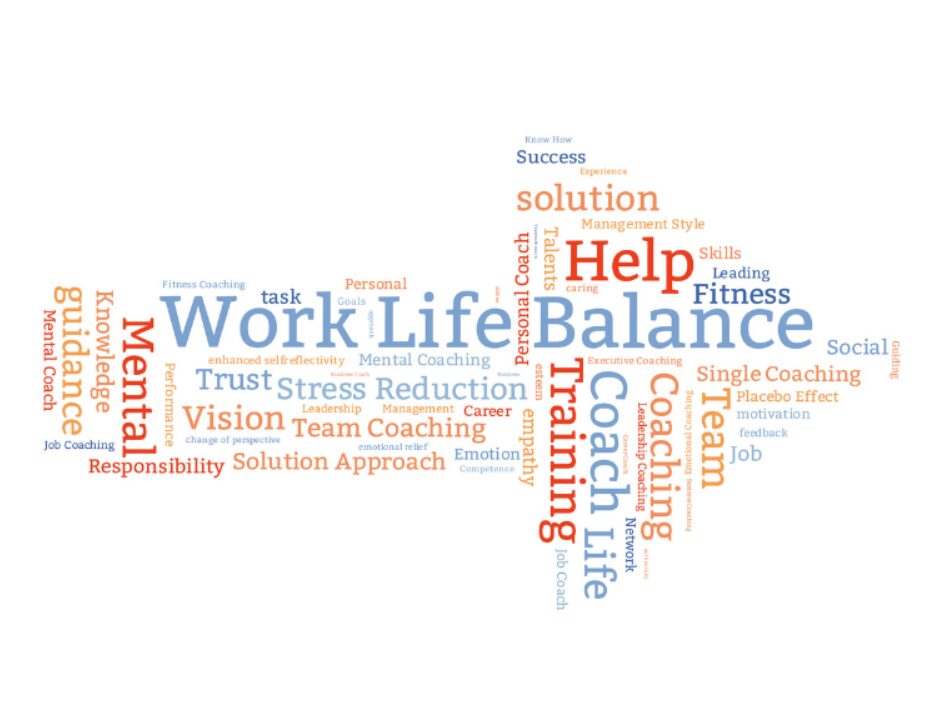Table of Contents
ToggleWork life balance is increasingly prioritized, the role of personal time off in ensuring employee well being, satisfaction, and productivity has become a focal point for businesses worldwide. For small to medium sized businesses, crafting and implementing an effective PTO policy is not just a perk but a strategic tool in building a resilient and attractive workplace.
This comprehensive guide delves into the multifaceted benefits of personal time off, offers best practices for managing PTO, and provides actionable strategies for overcoming common PTO management challenges.
The Importance of Work Life Balance
The importance of work-life balance cannot be overstated, as it is crucial for maintaining both personal well-being and professional productivity. Achieving an optimal work-life balance involves managing work responsibilities and personal activities in a way that reduces stress, prevents burnout, and allows for sufficient rest and personal fulfillment.
Mental and Physical Health
Overwork and constant stress can lead to a myriad of health issues, including anxiety, depression, insomnia, heart disease, and a weakened immune system. A good work-life balance allows for adequate rest, recreation, and exercise, contributing to overall better physical and mental health. Engaging in hobbies and spending time with loved ones can renew one’s spirit and reduce the risk of burnout.
Enhanced Productivity
Contrary to the notion that longer hours mean more productivity, overworking can actually lead to decreased efficiency. When individuals have the time to recharge, they tend to be more focused, creative, and efficient in their work. A balanced schedule ensures that employees are not over-exhausted, allowing them to contribute their best efforts during work hours.
Improved Job Satisfaction
A workplace that promotes work-life balance is likely to have happier and more satisfied employees. Satisfaction in one’s job increases loyalty to the company, reduces turnover rates, and fosters a positive workplace culture. Employees feel valued and respected when their personal time is acknowledged and protected.
Stronger Relationships
Work life balance is essential for maintaining and nurturing personal relationships. Spending quality time with family and friends strengthens bonds and provides emotional support. Strong relationships contribute to a support system that can offer relief during stressful periods, enhancing overall well being.

Personal Growth and Development
Balancing work with personal life allows individuals to pursue interests and goals outside of their professional careers. Whether it’s learning a new skill, traveling, or engaging in volunteer work, these activities contribute to personal growth and a sense of accomplishment.
Achieving Work Life Balance
- Set Boundaries: Establish clear boundaries between work and personal time. This could mean setting specific work hours and making a conscious effort not to work beyond those hours.
- Prioritize Tasks: Learn to prioritize tasks based on urgency and importance. This helps in managing time effectively and reducing unnecessary stress.
- Take Regular Breaks: Short breaks throughout the day can boost productivity and creativity.
- Learn to Say No: It’s important to know your limits and decline additional responsibilities when you’re already stretched thin.
- Use Technology Wisely: While technology can enhance productivity, it’s also important to disconnect from work related communications during personal time.

The Importance Of Personal Time Off
the importance of personal time off for employees cannot be overstated. PTO not only allows employees to rest and recharge but also contributes significantly to their overall well being and job satisfaction. For small to medium sized businesses, developing an effective PTO policy is crucial for attracting and retaining talent, fostering a positive workplace culture, and maintaining high levels of productivity. This article explores the benefits of personal time off, outlines best practices for managing PTO, and suggests strategies for handling common challenges associated with time off management.
The Benefits Of Personal Time Off
Enhanced Physical and Mental Health: Continuous work without adequate breaks can lead to chronic stress, burnout, and health issues. PTO offers a necessary pause, allowing employees to unwind, pursue hobbies, and spend time with loved ones, leading to improved mental and physical health.
Boosted Productivity and Engagement: Contrary to the fear that time off might hamper productivity, studies show that employees often return from PTO with improved focus and energy. This rejuvenation can spark innovation, enhance problem-solving skills, and increase overall work engagement.
- Attrition Reduction and Talent Attraction: A flexible and generous PTO policy serves as a powerful tool in talent retention and attraction. By acknowledging the value of work-life balance, businesses can stand out as employers of choice, reducing the turnover rate and associated costs.
Best Practices For PTO Management
Clear Communication: Clearly outline your PTO policy in the employee handbook, including how time off is earned, the process for requesting time off, and any blackout dates or peak periods when time off may be limited.
Forward Planning for Absences: Proactive planning, including cross training employees and setting up temporary coverage systems, ensures that work continues seamlessly in someone’s absence. This approach minimizes disruption and maintains productivity.
Promoting a PTO Friendly Culture: Leaders should actively encourage employees to take their deserved time off. By setting an example and making use of their PTO, management can cultivate a culture where employees feel genuinely supported in taking time for themselves.
Implementing Efficient Tracking Systems: Leveraging technology to track PTO accrual and usage can streamline administration and foster transparency. Many HR software solutions offer features that allow employees to request time off and view their PTO balances, simplifying the process for all parties involved.
The #1 tracker for your team’s PTO, vacations and absences, Day Off will help you track your team’s leaves and absences in one place. In seconds you will set up your leave policies, approval workflow and enjoy a unique experience. The “Day Off” app concept revolves around providing users a platform to manage their personal, sick, and vacation days more effectively. features aimed at both individual employees and organizations.
- Employees can track their balances up to date information about their available time off.
- You can add unlimited numbers of employees.
- Supports various leave types (e.g., annual, sick, maternity/paternity leave) and Supports Days and Hours balance, you can add unlimited numbers of leave types and leave policies.
- You can Customize week starting day settings according to your company’s operational days.
- Setting up public holidays specific to your country or region, by importing holidays from Google.
- The app can integrate with ( Slack, Google Calendar, Outlook Calendar and Teams)
- Supports Accruals & Carry overs.
Handling Common Challenges
Balancing Needs During Peak Times: Clearly define and communicate blackout periods or times when PTO requests may be limited due to business needs. Offering alternative benefits, such as bonus pay or additional time off during off-peak periods, can mitigate potential dissatisfaction.
Dealing with Unscheduled Absences: While emergencies happen, a clear policy should outline how unscheduled absences are handled, including the requirement for notice and documentation. This clarity helps maintain fairness and reduces misuse of PTO.
Ensuring Equitable Access: To prevent any perception of unfairness, it’s important to apply the PTO policy consistently across the board. When exceptions are made, they should be based on clear, justifiable reasons to maintain trust and morale.
Handling PTO Rollover: Decide on a policy for PTO rollover and communicate it clearly. Whether you allow rollover and how much can impact employee decisions about taking time off and can influence year-end absence spikes.
The Importance Of Personal Time Off For Employers
The benefits of personal time off for employers are often underestimated, yet they play a critical role in fostering a healthy, productive, and sustainable workplace. While the immediate association with PTO might be the advantages it offers employees, the benefits for employers are equally significant. Here are detailed insights into how PTO can be advantageous for employers:
Attracts Top Talent
Competitive in Hiring: In a competitive job market, offering a generous PTO policy can give employers an edge. Prospective employees often consider work life balance as crucial as salary in their job decisions. A strong PTO policy can be a deciding factor for top candidates.
Enhances Employee Retention: Employees who feel their personal time is respected are more likely to remain loyal to an organization. Reduced turnover rates mean lower costs related to recruiting, hiring, and training new staff, directly benefiting the employer’s bottom line.
Productivity And Creativity
Renew Workforce: Employees returning from PTO are often more productive and energized. The break from routine work allows employees to return with renewed focus and vigor, which can lead to increased efficiency and output.
Encourages Creative Insights: Time away from work can spark creativity, offering employees new perspectives or innovative solutions to problems. This fresh outlook can lead to breakthrough ideas and improvements in processes or products.
Reduces Burnout and Health Related Costs

Prevents Employee Burnout: Regular intervals of PTO help prevent burnout by allowing employees time to decompress and relieve stress. A workforce that maintains a healthy work life balance is less prone to burnout, resulting in more consistent productivity.
Lowers Healthcare Costs: Stress and overwork can contribute to various health issues, leading to increased absences and healthcare costs. By encouraging PTO, employers can see a reduction in these costs as employees have the opportunity to rest and recover.
Company Culture and Employee Morale
Fosters a Positive Work Environment: A culture that values employee well being and work life balance tends to attract like minded individuals, creating a cohesive and motivated team. A positive work environment is key to employee satisfaction and productivity.
Strengthens Employee Loyalty and Morale: When employees feel that their personal time is valued, they are more likely to have a positive attitude towards their employer, fostering loyalty and a willingness to go above and beyond in their roles.
Advantages
Enhances Planning and Efficiency: Implementing a clear PTO policy requires employers to plan for employee absences, which can lead to more efficient work processes and better allocation of resources. This planning helps ensure that productivity remains high, even when key employees are away.
Supports Risk Management: Encouraging employees to take PTO can also serve as a form of risk management. For roles involving financial handling or sensitive information, having employees take regular breaks can reduce the risk of fraud or misconduct, as it allows for checks and balances during their absence.
Conclusion
Personal time off is a valuable component of employment that benefits both individuals and organizations.
organizations can cultivate a more attractive, productive, and sustainable workplace.
By prioritizing mental and physical health, work life balance, and personal development, PTO policies contribute to a more engaged, productive, and satisfied workforce.
